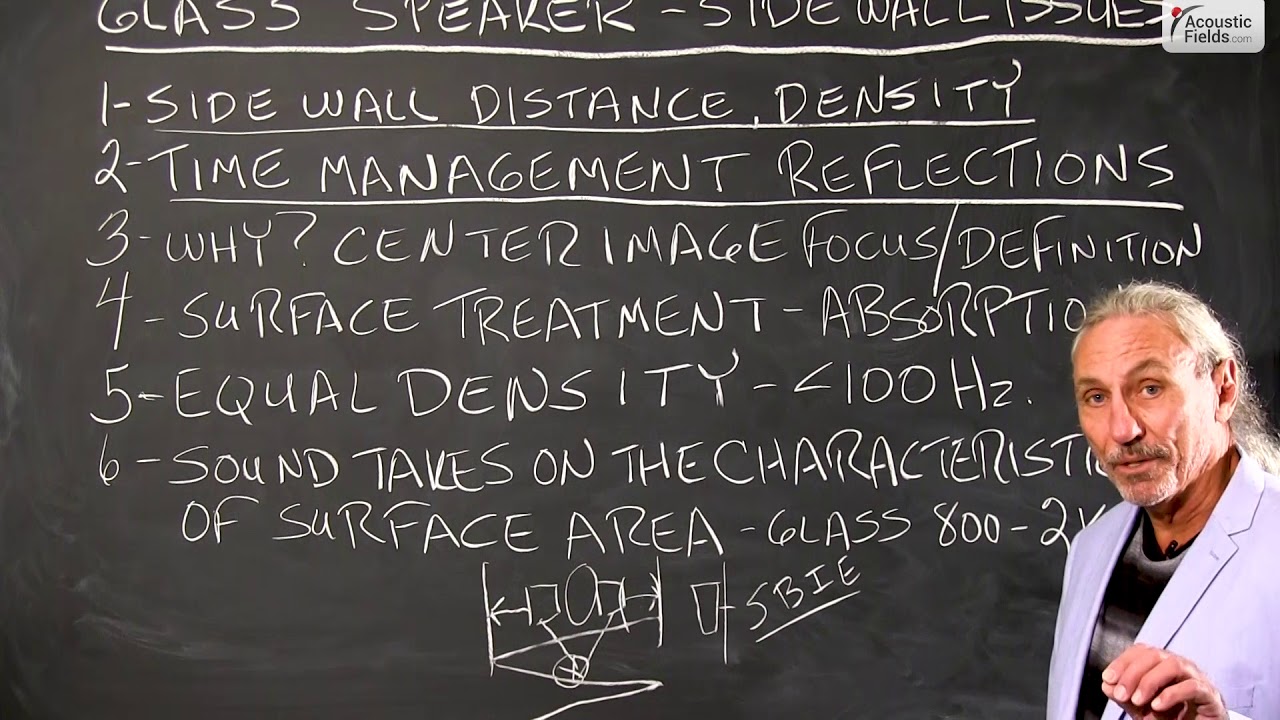Sidewall reflection and speakers too close to the sidewall. So we’re going to actually show you a photo and we can go ahead and do that right now where we have a speaker right next to a glass. So we’re going to talk about why this is not a good situation. In fact, it’s so bad that you simply can’t do it.
So we can see in this photo that we have a speaker really close to a boundary surface and I think we all know from past videos the problem with that but more importantly in this photo, we have glass. All right, so let’s look at what our problems are with this situation. So we have sidewall distances that are critical. Critical in everything we do in 2-channel. So these distances here must be equal, okay? There is no compromise. We simply cannot have distances on the sidewalls that are unequal. So that’s the first thing.
Then we have to calculate what that distance is. I can tell you with utmost certainty that it’s not against the wall. That we know for sure. How far will depend on many other variables. Usage, what we’re trying to accomplish in the room and a host of other issues. But the bottom line here, speaker boundary interference effect here is critical. So we can’t have that. The first rule in acoustics is do no harm. So we don’t want to do more damage than we’re trying to alleviate, okay?
So we want to time manage the reflections off of the sidewall surfaces at the listening position because remember, we have all of these reflections going back and forth. And we have to manage those so we get that strong center image that’s defined and revealed so we have everything in the mix.
So the bottom line here is we have to control the distance and we also have to control and manage the reflections. And we know that the reason for that is center image focus and definition. Surface treatment is critical in this situation because this is usually our shortest distance of all. It’s shorter than the distance to the listening position. It’s usually shorter than the distance to the front wall.
So it’s a very, very critical situation and in most of our room usages that demand definition and separation and clarity, we use absorption. Because we can control it. Now, not just any absorption. Rate and level of absorption are critical so we have to make sure that the material we’re using has the right rate and level of absorption for the usage of the room. There is no one-size-fits-all, okay?
So equal density on the sidewalls, very, very critical. And in that photo that you saw we have glass on one sidewall, I don’t know what’s on the other because it really doesn’t matter, okay? You can’t have that situation at all. So the bottom line here is we have to have equal density in the structure for lower frequencies and this all adds up. Remember, good quality sound is about doing a lot of little things in the correct order.
So it’s good to start doing all the little things correctly and then we won’t have issues as we go down the road. And remember, my classic saying “sound takes on the characteristics of the surface areas that it strikes and glass has that 800 to 2K aberration that we just simply can’t have in our mixes.
So I hope this helps. Keep those speakers away from the sidewalls, definitely do not have glass sidewalls.
—
This is an unedited transcript from our video series from Acoustic Fields. There will be some errors in grammar and sentence structure that occur during this translation process.
For complete understanding and comprehension, please view the video which is included in this text. For any additional information regarding this topic or others relating to room acoustics, please contact us directly at:
P: 520 – 392 – 9486







